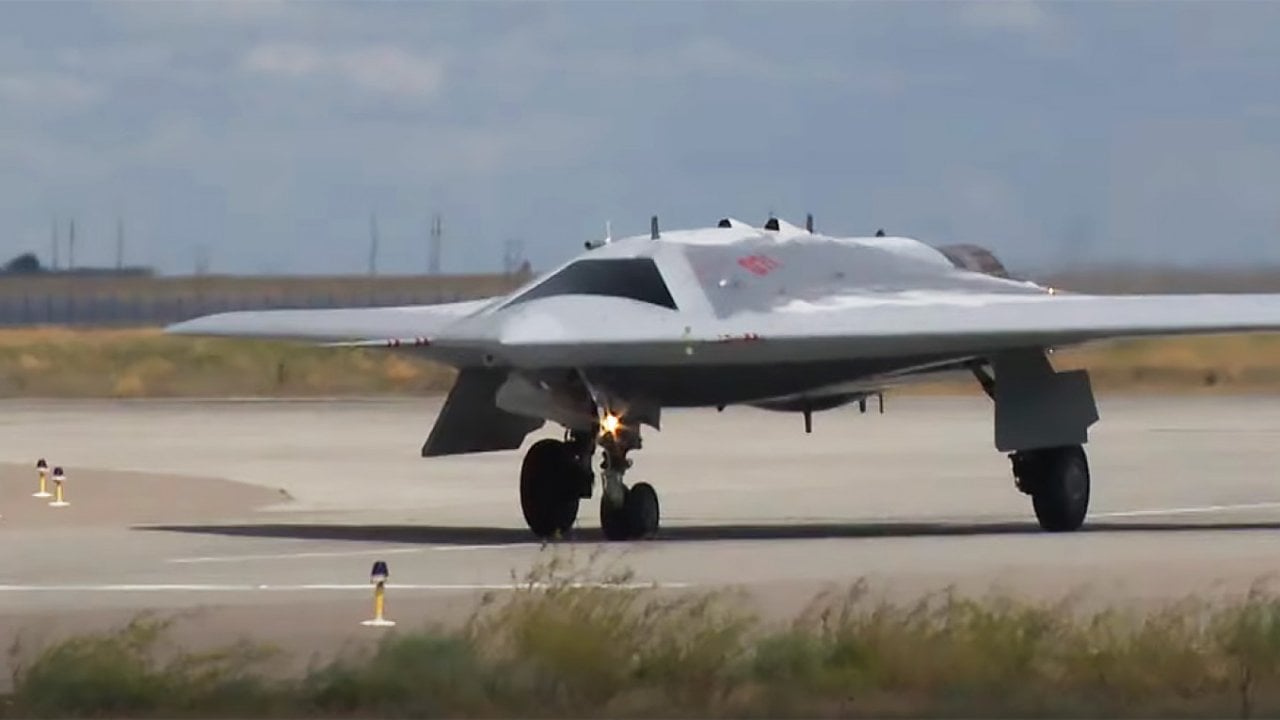
It Looks Like a B-2 Bomber: Here Comes Russia's Okhotnik Stealth Drone
Take a look.
by David AxeKey point: Russia is exhibiting a variety of advanced, air-worthy platforms.
The Russian air force’s first stealth fighter has flown in close formation with its first armed, stealth drone, possibly indicating that the two types might fly and fight together in the future.
The Okhotnik unmanned aerial vehicle made its first joint flight with an Su-57 manned fighter, the Russian defense ministry announced on Sept. 27, 2019.
The ministry released a video of the flight, which reportedly took place over a military test base and lasted 30 minutes.
“During the flight, the UAV interacted with the Su-57 to test extending the fighter's radar and target designation range for long-range air-launched weapons outside enemy air-defense coverage,” Jane’s reported, citing the Kremlin.
The test flight implies that the Russian air force intends to operate the Okhotnik and the Su-57 in mixed formations. “This seems to be the global trend,” commented Samuel Bendett, an independent expert on the Russian military.
Bendett is a researcher for the Center for Naval Analyses and the American Foreign Policy Council.
He pointed to the U.S. military’s own program to develop a “wingman” drone that possesses the ranger, performance and weapons-capability to fly into combat with manned fighters. China, Japan and Australia also are developing wingman drones.
“At the same time, Ohotnik may be a long-range air-defense penetrator, in which case it would need to fly ‘solo’ in an automated mode, in order not to utilize Russian manned assets,” Bendett told The National Interest.
There’s no reason Okhotnik could not perform both roles. The XQ-58 that the U.S. Air Force is developing for the Americans’ own wingman-drone program can be controlled by a pilot in a nearby manned aircraft or by an operator at a facility on the ground.
Whatever the Okhotnik’s exact role, actual missions “are years away,” Bendett added. Before the Russian air force can deploy Okhotnik in meaningful numbers, it must undertake what Bendett called “serious work” on the drone’s command-and-control systems and processes.
An Okhotnik demonstrator took off from a military test site for its first-ever flight on Aug. 3, 2019. The flying-wing-shape drone flew for more than 20 minutes at a maximum altitude or around 2,000 feet, reported TASS, a state news organization.
With its approximately 50-feet wingspan, Hunter-B is in the same class as China's Tian Ying drone, the U.S. Air Force's RQ-170 surveillance unmanned aerial vehicle, the U.S. Navy's experimental X-47B UAV and Boeing's X-45C drone demonstrator.
It likely is subsonic. Its shape could give it stealth qualities from some angles, but its unshielded engine nozzle probably means it easily can be detected from behind. “The drone is equipped with equipment for optical-electronic, radio engineering and other types of intelligence,” TASS reported.
The likelihood of [Okhotnik] eventually entering squadron service with the Russian air force is "big," Tom Cooper, an independent expert on Russian military aviation, told The National Interest.
Still, “the aircraft we are seeing now is a testbed,” Bendett said, “and its final configuration and characteristics may change based on these tests.”
The same is true of the Su-57. Six Sukhoi Su-57 stealth fighters -- fully half of the Su-57s that Sukhoi has built since the type first flew in 2010 -- escorted Putin’s Il-96 VIP plane on the trip from Moscow to Astrakhan.
Speaking on May 15, 2019, Putin said the Kremlin would buy scores of Su-57s over the next eight years. If Putin is serious and the Russian defense ministry follows through on the pledge, Russia soon could possess a meaningful number of stealth fighters.
But there are good reasons to be skeptical. The Su-57 still isn’t a mature design. It lacks key combat systems. Sukhoi hasn’t set up a big, efficient production line for the type. And Moscow almost certainly doesn’t have the money to buy a large number of stealth fighters.
Claiming that Sukhoi had driven down the cost of an Su-57 by 20 percent, Putin announced the Kremlin by 2027 would buy 76 Su-57s instead of just 16. “I hope that the adjusted plans will be executed,” Putin said.
The joint flight between and Okhotnik and an Su-57 could help to boost both programs. ”Is it propaganda?” Bendett asked. “Yes, to a certain degree. at the same time, Russians are showing an air-worthy platform.”
This first appeared in September 2019.
Image: Russian Ministry of Defense.